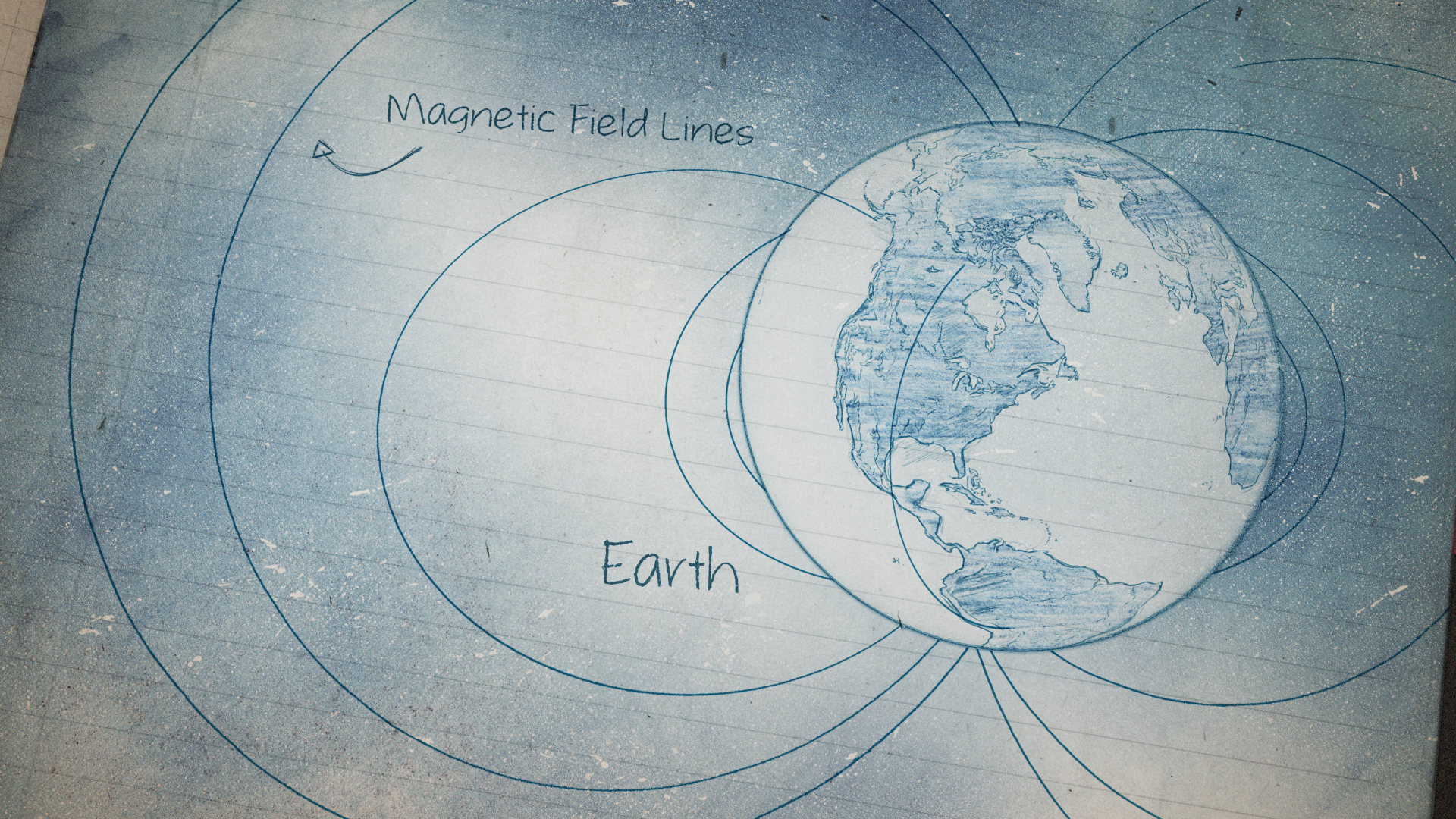Ocean Tides and Magnetic Fields
Seawater is an electrical conductor, and therefore interacts with the magnetic field. As the tides cycle around the ocean basins, the ocean water essentially tries to pull the geomagnetic field lines along.
Because the salty water is a good, but not great, conductor, the interaction is relatively weak. Scientists at NASA Goddard Space Flight Center are developing improved methods to isolate the signal from ocean tides and use that information to determine the heat content of the ocean.
Music: "Memory Of A Lifetime" by J Ehrlich [SESAC], Jean-Christophe Beck [BMI]
Complete transcript available.
Watch this video on the NASA Goddard YouTube channel.
Earth’s magnetic field is built up from many contributing sources ranging from the planet’s core to the magnetosphere in space. Untangling and identifying the different sources allows geomagnetic scientists to gather information about the individual processes that combine to create the full field.
One contributor is the ocean, although it is a small contributor. From that isolated contribution, scientists at NASA Goddard Space Flight Center have developed a way to determine the heat content of the ocean. But how do the tides affect Earth’s magnetic field?
Seawater is an electrical conductor, and therefore interacts with the magnetic field. As the tides cycle around the ocean basins, the ocean water essentially tries to pull the geomagnetic field lines along.
Because the salty water is a good, but not great, conductor, the interaction is relatively weak. The strongest component is from the regular lunar tide that happens about twice per day (actually 12.42 hours). Other contributions come from ocean swell, eddies, and even tsunamis.
The strength of the interaction depends on the temperature of the ocean water, and scientists are now able to determine how much heat is being stored in the entire ocean, from wave top to sea floor.
For More Information
Credits
Please give credit for this item to:
NASA's Goddard Space Flight Center
-
Producer
- Matthew R. Radcliff (USRA)
-
Technical support
- Aaron E. Lepsch (ADNET Systems, Inc.)
-
Animator
- Brian Monroe (USRA)
-
Writers
- Matthew R. Radcliff (USRA)
- Kate Ramsayer (Telophase)
-
Scientists
- Robert H. Tyler (University of Maryland College Park)
- Terence J. Sabaka (NASA/GSFC)
-
Artistic director
- Michael Lentz (USRA)
-
Narrator
- Mike Velle (KBR Wyle Services, LLC)
Release date
This page was originally published on Monday, December 12, 2016.
This page was last updated on Wednesday, May 3, 2023 at 1:48 PM EDT.
![As Earth warms, much of the extra heat is stored in the planet’s ocean – but monitoring the magnitude of that heat content is a difficult task. A surprising feature of the tides could help, however. Scientists at NASA’s Goddard Space Flight Center in Greenbelt, Maryland, are developing a new way to use satellite observations of magnetic fields to measure heat stored in the ocean.Music: War Torn by Brad Smith [BMI] Complete transcript available.Watch this video on the NASA Goddard YouTube channel.](/vis/a010000/a012400/a012456/12456-ocean-heat-AGU-web.jpg)
